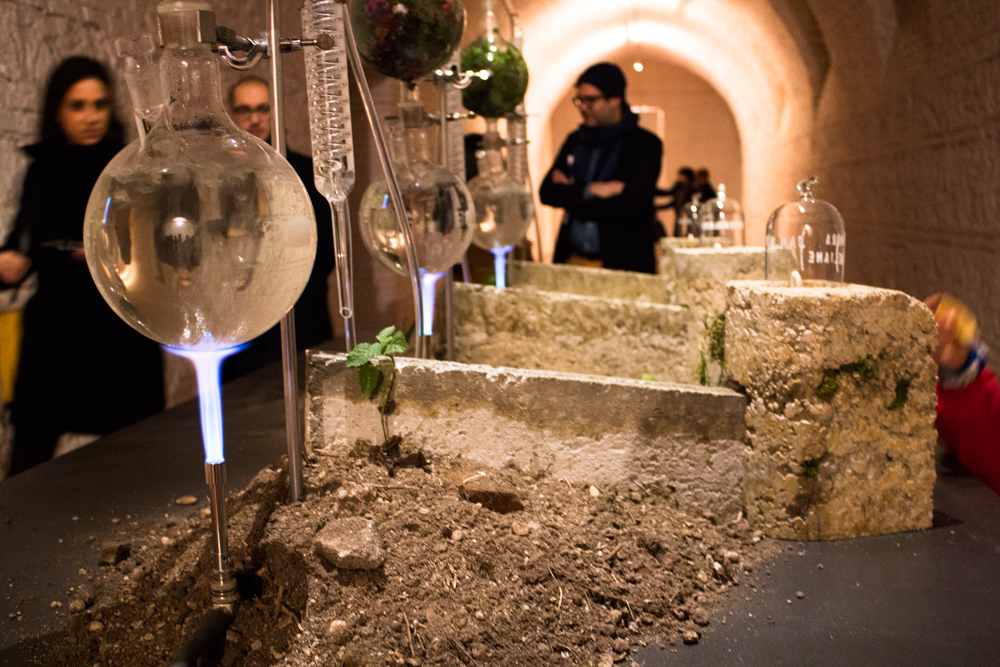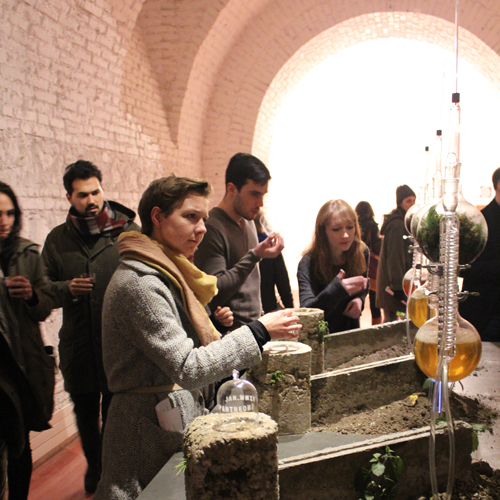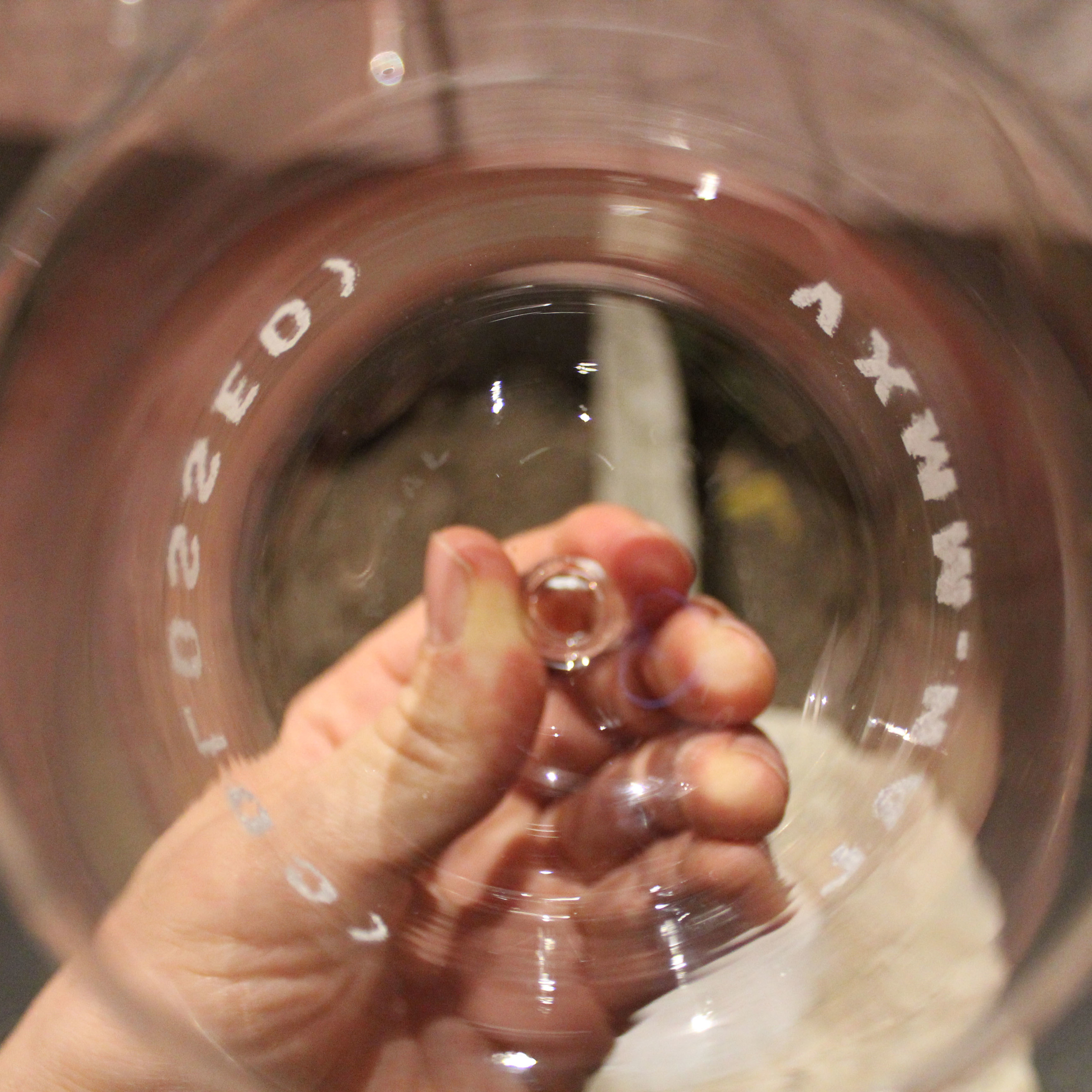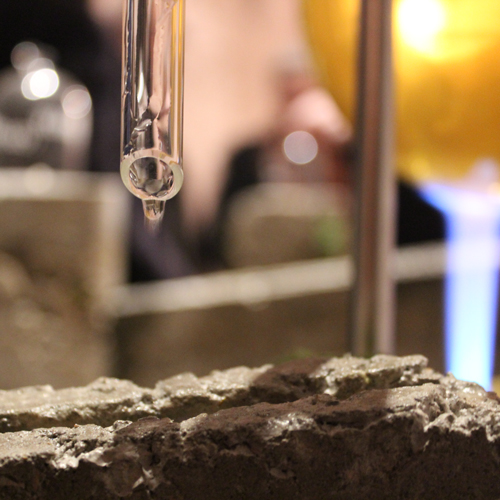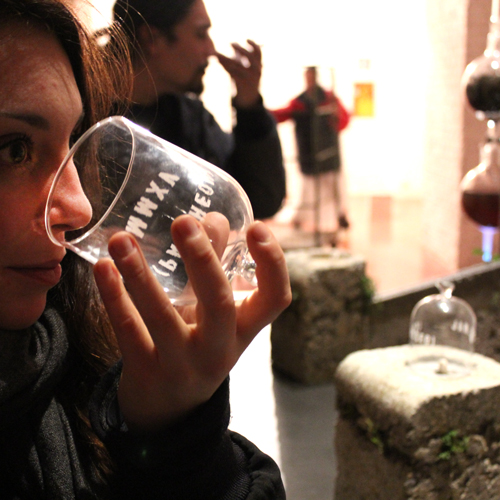Commonstudio's "A-Roma" installation re-interprets ancient Rome through a contemporary lens by distilling the scents of the living urban ecologies growing on top of, in between, and alongside historic sites.
It was created for the annual "Cinque Mostre" at the AAR, celebrating the work of the current Rome Prize designers and artists, and will be on display until February 29th.
Read and see more on the project HERE
With an opening reception from 6-9pm on January 29th, Cinque Mostre 2015 is an annual exhibition of work by current Rome Prize Fellows. This year it includes Fellow-curated collaborative projects and a guest-curated project by Ilaria Marotta and Andrea Baccin of Cura. in which Fellows in several disciplines and invited artists take part in a multi-faceted exhibition, Milk Revolution, installed in various sites throughout the McKim, Mead & White Building.
Commonstudio will be contributing an installation entitled "A Roma" exploring Rome's iconic sites and monuments through alternative narratives that reflect our interests in urban ecology.
Commonstudio Founders Daniel Phillips and Kim Karlsrud will be part of a public lecture celebrating the 150th anniversary of George Perkins Marsh, a seminal writer and thinker on issues of humankind's relationship to the planet. The lecture will take place at the Villa Aurelia in Rome from 7:00 to 9:30pm on Tuesday December 2nd. Daniel and Kim will contextualize the work of Commonstudio in to climate change and the future of cities.
#naptime
There’s a certain satisfaction to getting lost in a new city. Or your own city for that matter. The vague exhilaration of stumbling across an undiscovered gem of a restaurant, or finding a hidden staircase on your walk home. If you relate to this feeling, chances are you’ve participated in a particular kind of urban wandering often referred to as a "Dérive."
Rome is a city steeped in many layers of meaning and history. One interesting layer to us of course is the emergent ecologies that have insinuated themselves into the urban context. Some of the weeds we're finding are unique to this region of the Mediterranean, and some are common weeds that crop up in many cities around the world. We'll be checking in here periodically to document some of our urban finds. Below are a few from this week:
Tall Fleabane (Conyza Sumatrensis)- A common urban weed throughout temperate regions of the world. It seems to thrive in disturbed areas like this abandoned pavilion. Each plant can produce up to 300,000 seeds, which are dispersed by the wind to far flung reaches of the urban landscape.
The Aurelian Wall built between 271 AD and 275 AD is still intricately woven within the fabric of Rome. Many areas of the wall have been colonized by opportunistic plants such as the ones you see here. These are actually edible capers (Capparis Spinoza).
Wlld Carrot (Daucus Carota), in it's final stage of life. The white flowers give rise to beautifully architectural seed heads which hold hundreds of new recruits. Each seed is equipped with a velcro-like set of stiffly hooked hairs ready to attach themselves onto the fur (or clothes) unsuspecting passers-by.
Throughout the last month, we’ve been exploring the topic of urban ecology from a few different perspectives. First, through the lens of our personal practice, we’ve introduced some of the challenges we’ve faced while developing projects and businesses at the intersection of ecological, economic, and social concerns. We’ve considered a historical perspective by contrasting American and European attitudes toward nature, cities, and wilderness. We’ve discussed the meaning, ethics and aesthetics of “ecological urbanism” through some exciting contemporary precedents. We’ll wrap up our BeWilder series this week with a few final ideas and questions.
Last week we explored some of the forces shaping our relationship to Nature. Or rather “nature”, the culturally constructed category that is often hard to pin down. These shared ideas about what nature is (and isn’t) are important because they tend to actively shape the way we think about and interact with the world around us. Can we look at nature in new ways? Is it possible to build new narratives and new frameworks for understanding and relating to the planet we inhabit? This week we'll attempt to break down some of the tidy categories that limit our thinking, and explore some interesting cases for urban ecology.
The American mind has a particular soft spot for the general category we label as "Nature." Walk through the aisles of any grocery store as evidence. Muted pastel color pallets of greens and browns, faux burlap graphic texturing, distressed typefaces that appear hand stamped, a litany of promises, slogans and certifications. The message is clear- that the natural, or at least the appearance of it, is always synonymous with the good. There's even a "natural" version of Cheetos available for the more discriminating junk foodies among us. In short, we've become rather sentimental, but it's not all our fault. (Click to continue reading)
Throughout the development of self-initiated projects like Greenaid, we have often found ourselves grappling with questions that extend far beyond the boundaries of our creative practice. By helping to promote and empower the unsanctioned planting of native seeds in underutilized urban landscapes, one of the most frequent questions we were asked concerned the particular composition of our seedbombs. What species did we include? Where and how did we source our seeds? How did we ensure that whatever was being planted was appropriate? The more earnestly we tried to answer these questions for ourselves and others, the more we realized that we’d wandered into a much bigger, and at times heated debate about the very nature of nature itself. And it’s kept us thinking ever since.




